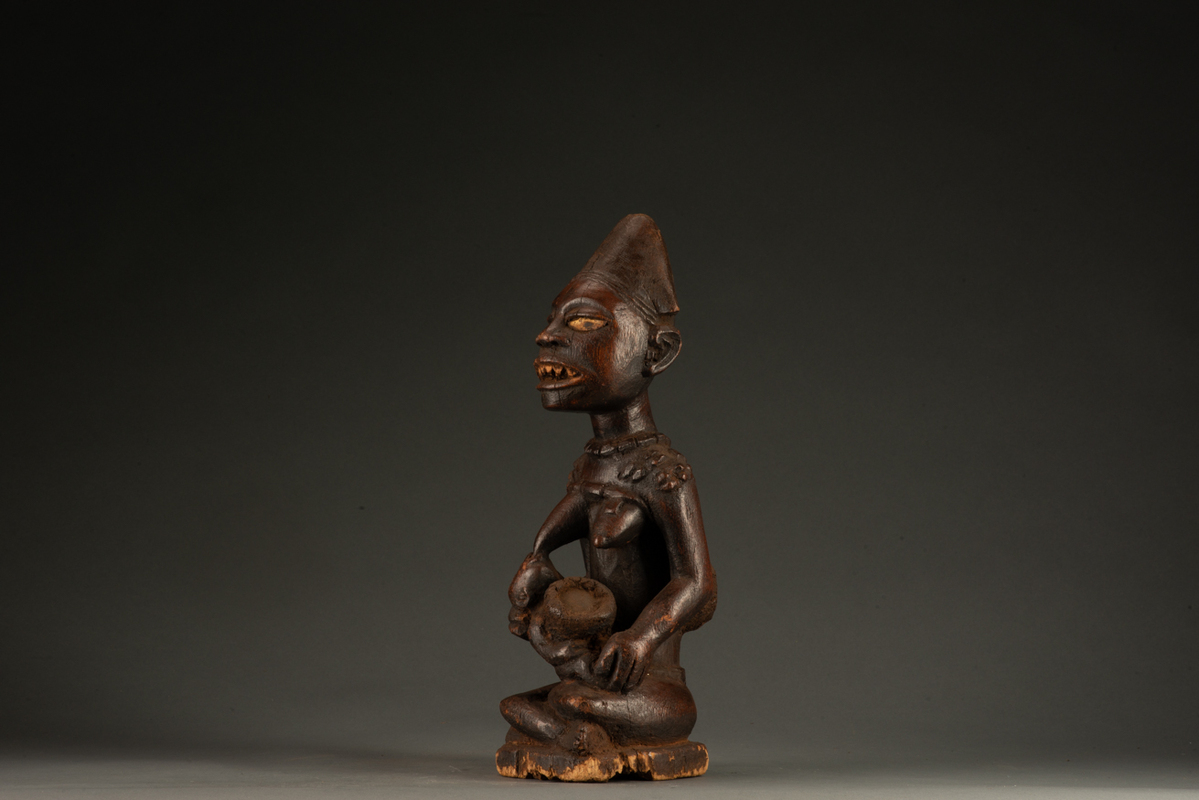The 300,000 Yombe people are artistically prolific. They reside in the far northwestern tip of the Congo. Their maternity figures, nail and mirror fetishes have typical shoulder scarifications and a high, pointed or rounded coiffure incised with geometric motifs. Mirror and nail fetishes have an aggressive expression characterized by an open mouth usually showing filed teeth.
Yombe history indicates a southward migration of the Mbenza clan from present day Gabon sometime before the 15th century. Oral and written accounts connect them with the historical Mayomba Kingdom, which flourished in the 16th century. During the 16th and 17th centuries migrations of Manyanga and then Bwende peoples arrived in the area. Both groups eventually assimilated into Yombe communities. The Kongo and Solongo expansions at the end of the 17th century forced the Yombe to withdraw from the banks of the Congo (Zaire) River. Although European contact was limited until the end of the 19th century, depictions of Portuguese people in Yombe art reflect 16th century Portuguese styles, indicating a moderate degree of European influence in this region at quite an early date.
Primary Yombe social divisions are based on membership in one of nine clans. All clans trace their heritage to Mbaangala who had nine daughters whose names are the same as the clan that each founded. Yombe peoples more readily affiliate with fellow clan members, and each clan has its own set of social and moral rules. Historically the Yombe recognized a supreme chief, but today there are instead localized land chiefs who act as supreme judges and maintain a great deal of religious power. Descent is traced matrilinealy and each clan has a supreme leader (mfumu makanda), who is elected by his fellow clan members based on his wealth and oratory skills.

